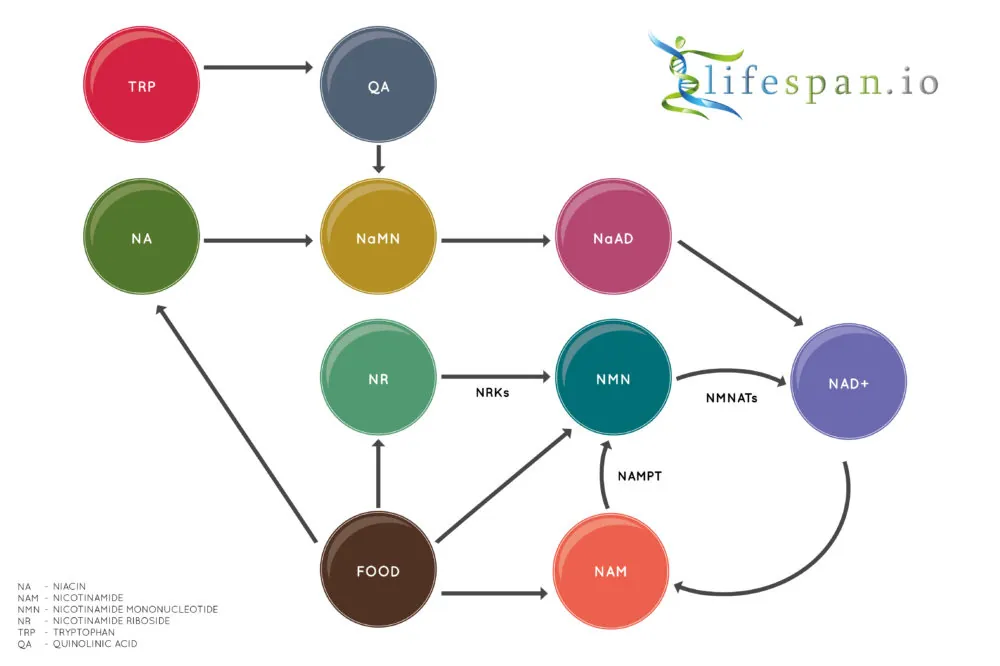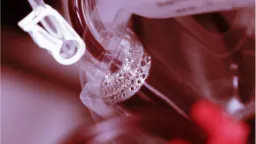This has been a productive month for rejuvenation biotechnology companies, longevity researchers, and us here at Lifespan.io. Let’s take a look at what’s happened in June.
LEAF News
Why I Am Still Future Positive on My Birthday: Board member Steve Hill shares his musings on his birthday, discussing where we are and where we go from here.
 Can Aging Research Prevent the Next Pandemic?: Aging weakens the immune system, leaving us susceptible to communicable diseases.
Can Aging Research Prevent the Next Pandemic?: Aging weakens the immune system, leaving us susceptible to communicable diseases.
Journal Club
 The CellAge Database with Dr. João Pedro de Magalhães: CellAge is a database that contains 279 genes that are linked to cellular senescence, and Dr. Magalhães came to Journal Club to explain this database to us.
The CellAge Database with Dr. João Pedro de Magalhães: CellAge is a database that contains 279 genes that are linked to cellular senescence, and Dr. Magalhães came to Journal Club to explain this database to us.
Interviews
 Diluting Blood Plasma Rejuvenates Old Mice: Irina and Michael Conboy return for an interview explaining how diluting the aging factors blood plasma promotes rejuvenation.
Diluting Blood Plasma Rejuvenates Old Mice: Irina and Michael Conboy return for an interview explaining how diluting the aging factors blood plasma promotes rejuvenation.
Rejuvenation Roundup Podcast
Ryan O’Shea of Future Grind hosts this month’s podcast, showcasing the events and research discussed here.
Research Roundup
New Epigenetic Clock Can Help Discover Anti-Aging Drugs: By measuring changes to epigenetics, CellAgeClock can help determine the epigenetic effects of a great many compounds.
 A New Likely Mechanism Behind Osteoporosis Discovered: Misfolded proteins cause osteoblasts to lose function, resulting in bone that cannot be rebuilt.
A New Likely Mechanism Behind Osteoporosis Discovered: Misfolded proteins cause osteoblasts to lose function, resulting in bone that cannot be rebuilt.
Removing Some Senescent Cells May Have Consequences: Some senescent cells are responsible for maintaining blood-tissue barriers, and removing these cells leads to health problems and physical deterioration.
 Hair Graying May Be Reversible: Like tree tings, gray hairs can show what happened to a hair over the course of its growth, and this phenomenon has been used to show that reducing stress can restore color to hair in some cases.
Hair Graying May Be Reversible: Like tree tings, gray hairs can show what happened to a hair over the course of its growth, and this phenomenon has been used to show that reducing stress can restore color to hair in some cases.
Gut Bacteria Can Predict Your Biological Age: Gut bacteria can serve as a biomarker of aging, and a deep learning algorithm has been built to find out how.
The Gene LMNA’s Effect on Aging: The LMNA gene is responsible for lamins, which protect the nucleus against genomic damage. Mutations to this gene can lead to accelerated aging.

Deploying Immunotherapy Against Senescent Cells: Using CAR-T to send the immune system against cancer cells is a new form of therapy; using the same technique against senescent cells may also be effective.
The Role of the Immune System in Removing Senescent Cells: Inflammation, the SASP, and cellular senescence are all closely related.
 A Strong Link Between Alzheimer’s and Senescence: While senescence is difficult to detect in neurons, due to the fact that mature neurons do not divide, senescence may be a critical part of the Alzheimer’s cascade.
A Strong Link Between Alzheimer’s and Senescence: While senescence is difficult to detect in neurons, due to the fact that mature neurons do not divide, senescence may be a critical part of the Alzheimer’s cascade.
A Biomarker Based on Senescent Cell Secretions: As you age, senescent cells secrete the inflammatory SASP, which can turn other cells senescent as well. Using the SASP as a biomarker may prove useful in the clinic.
 Reversing Atherosclerosis by Resetting Gut Bacteria: Introducing cyclic peptides to reset the gut microbiomes of mice fed a high-fat diet reduced their cholesterol by more than a third.
Reversing Atherosclerosis by Resetting Gut Bacteria: Introducing cyclic peptides to reset the gut microbiomes of mice fed a high-fat diet reduced their cholesterol by more than a third.
Nanoparticles Deliver Twin Drug Payload for Atherosclerosis: Delivering both cyclodextrin and statin to atherosclerotic lesions has been shown to improve cardiovascular health in mice.
 New Evidence of Common Genetic Causes in Age-Related Diseases: Algorithms and statistical analysis have discovered the role of genes in causing age-related diseases.
New Evidence of Common Genetic Causes in Age-Related Diseases: Algorithms and statistical analysis have discovered the role of genes in causing age-related diseases.
Pilot Study Results Suggest Epigenetic Age Reversal: Ponce de Leon Health has published a press release in which it claims that its supplement, Rejuvant, reverses epigenetic age by 8.5 years.
Transient metabolic improvement in obese mice treated with navitoclax or dasatinib/quercetin: There is a link between obesity and senescent cells, and treating these cells with senolytics has been shown to be effective in mice.
Bone marrow mesenchymal stem cells improve thymus and spleen function of aging rats: Multiple biomarkers associated with aging were improved through the application of these particular stem cells.

Niacin Increases NAD+ Significantly in Human Trial: The human body is good at turning the vitamin niacin into the vital compound NAD+.
NAD+ Restores Mitochondrial Function in Egg Cells: Oocytes are enormous cells with a lot of mitochondria, and NAD+ has been shown to restore the function of these mitochondria in older ages.
 Niacin May Prove Useful Against Brain Cancer: A type of cancer called a glioblastoma hijacks immune cells, but treatment with niacin disrupts this process.
Niacin May Prove Useful Against Brain Cancer: A type of cancer called a glioblastoma hijacks immune cells, but treatment with niacin disrupts this process.
Plasma endothelial cells-derived extracellular vesicles promote wound healing in diabetes: These extracellular vesicles were shown to inhibit cellular senescence in diabetic skin fibroblasts.
Small Extracellular Vesicles Have GST Activity and Ameliorate Senescence-Related Tissue Damage: These particular vesicles, when taken from young donors, have been shown to have multiple anti-aging effects, including reducing the effects of reactive oxygen species.
Inhibition of Neural Stem Cell Aging Through the Transient Induction of Reprogramming Factors: Transient OSKM has been previously shown to encourage stem cells to stay youthful without losing cellular specialization, and this experiment shows that it works in neural stem cells as well.
Reversing a model of Parkinson’s disease with in situ converted nigral neurons: Turning astrocytes into neurons was shown to be effective in a model of this neurodegenerative disease.
The mitochondrial derived peptide humanin is a regulator of lifespan and healthspan: Organisms, including human beings, with naturally higher levels of the peptide humanin have considerably longer lives than organisms with lower levels.
Identification of longevity compounds with minimized probabilities of side effects: Combining two separate databases, DrugAge for geroprotectors and SEP-L1000 for side effects, allows researchers to focus their efforts on the drugs that might provide the most benefits with the fewest risks.
Discovery of fifteen plant extracts and identification of cellular processes to prolong the lifespan of budding yeast: Yeast is a traditional model of aging, and these compounds have been found to target pathways associated with the aging processes.
Telmisartan and Rosuvastatin Synergistically Ameliorate Dementia and Cognitive Impairment in Older Hypertensive Patients With Apolipoprotein E Genotype: APOE-e4 is a particularly dangerous allele to carry, but new research has identified drugs that can alleviate some of the problems associated with it.
Gray whale transcriptome reveals longevity adaptations associated with DNA repair and ubiquitination: Whales are some of the longest-lived animal species known, and this research shows that their longevity is at least partially due to their ability to repair genetic damage.
News Nuggets
 Alkahest Announces a Human Trial to Address Cognitive Impairment: We have previously discussed the possibility of removing unwanted compounds from aged blood, and Alkahest is conducting a Phase 2 clinical trial to do exactly this with the compound B2M.
Alkahest Announces a Human Trial to Address Cognitive Impairment: We have previously discussed the possibility of removing unwanted compounds from aged blood, and Alkahest is conducting a Phase 2 clinical trial to do exactly this with the compound B2M.
Update from CellAge: Board member Steve Hill reports some bad news from the team at CellAge. Unfortunately, science is hard especially in the context of aging research, and there is always the danger that things do not go according to plan; sadl,y on this occasion, this is the case, and it highlights why we must take as many shots on goal as possible.
Human Augmentation Institute: Rejuvenation Roundup Podcast host Ryan O’Shea will speaking at the Humanity Plus Post-Pandemic Summit, a free digital event taking place on July 7-8, 2020. Ryan’s talk will focus on his efforts with a new non-profit organization, the Human Augmentation Institute, which was founded to uphold bodily autonomy and ensure that any efforts in human augmentation are done ethically, safely, and responsibly.








